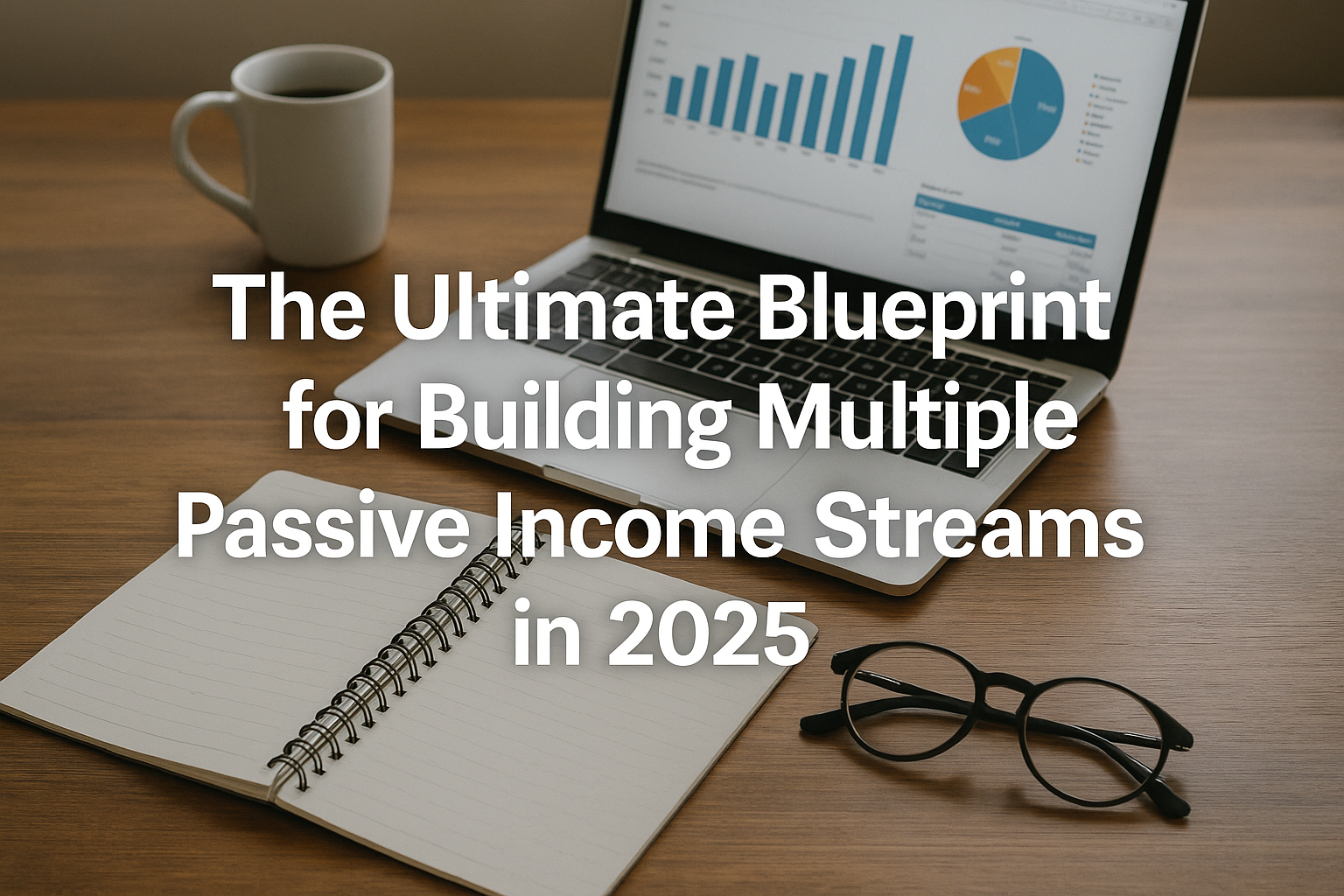Earning money without trading hours for dollars is no longer a dream. In 2025, anyone can set up simple systems that bring in cash on their own. This guide shows you step by step how to build several income sources that run in the background. Every term is explained in plain English so you can start right away.
1. What Passive Income Means
Passive income is money you get with little daily work. You do work once—then the money keeps coming in. Examples:
- Savings Interest: You put money in a high-interest savings account (an online bank that pays you extra each year).
- Digital Products: You create an eBook or a simple worksheet one time. People buy it again and again.
- Rent: You own a room or home that you rent out, and you collect rent each month.
2. Pick Your Starting Point
Before you begin, answer these three questions in a notebook:
- How much time? Can you spend 2–5 hours a week?
- How much money? Even $50 now helps.
- What skills? Writing, design, or teaching work well.
Use what you already have. If you enjoy writing, start with an eBook. If you have extra cash, start with a high-interest savings account.
3. Stream #1: High-Interest Savings Account
This is the easiest step.
- Choose a top account like Ally or Marcus.
- Link it to your checking account.
- Set up an automatic transfer of $50–$100 each payday.
- Let interest build up. Check your balance monthly.
Why it works: You earn 3–4% per year (compared to under 0.5% at big banks). Your money stays safe under government insurance rules.
4. Stream #2: Simple Digital Product
Next, create something once and sell it many times. Options include:
- eBook or Guide: Write clear how-to steps on a topic you know.
- Printable Planners: Design a weekly planner or checklist people can download and print.
How to sell:
- Use a site like Etsy or Gumroad.
- Upload your file and set a price (e.g., $5–$15).
- Share your link on social media or in an email.
Digital products take a few hours to make. After that, sales happen on their own.
5. Stream #3: Affiliate Niche Blog
A niche blog focuses on one small topic, such as “budget travel” or “home coffee brewing.” Steps:
- Pick a domain name (like MyMoneyTools.com).
- Choose web hosting (a service that puts your site online).
- Write helpful posts of 800–1,000 words each. Use clear headings and simple words.
- Join affiliate programs (Amazon Associates or other services).
- Insert links to products in your posts. When readers buy through your link, you earn a fee.
- Promote on social sites or in relevant groups.
Why it works: You help readers solve problems, and you earn commissions on items they buy.
6. Stream #4: Short-Term or Long-Term Rental
If you can save around $5,000 or more, consider real estate:
- Short-Term (Airbnb): Rent a spare room by the night.
- Long-Term: Rent a full home or apartment by the month.
Real estate takes more effort at first—cleaning, listing, and maintenance. But once set up, it delivers steady monthly income.
7. Automate and Track Your Streams
- Calendar Alerts: Set one reminder per month to check each stream.
- Simple Spreadsheet: List each income source and track earnings.
- Reinvest: Put part of your earnings back into your high-interest account or next product idea.
8. Scale Gradually
Start with one stream and add a new one every 2–3 months. A sample timeline:
- Month 1–2: High-interest savings + digital product.
- Month 3–5: Affiliate niche blog.
- Month 6–8: Short-term rental setup.
By the end of the year, you could have four income sources bringing in money automatically.
